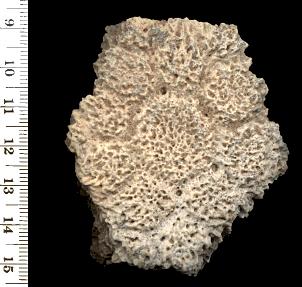

West of the Rio Grande Valley near El Paso, steep slopes rise to the nearly flat plain known as La Mesa Surface. The sediments beneath this surface were laid down before the Rio Grande cut through its pass to the southeast and excavated its present valley. Fossil remains of animals occasionally weather from the lower sediments.
Some, like the camels and horses, had a long evolutionary history in North America. But others, like the 6-foot long relative of the armadillo known as a glyptodont, are unknown from the continent until the late Pliocene. Their absence becomes more mystifying when we learn that earlier, related fossils are common in South America. What kept them out of the North?
The answer, to the geologist, is simple—oceanic waters separated North
and South America until just a few million years ago. South America's fauna evolved
in isolation for many millions of years, until the restless earth finally made the land
connection that allowed the faunal movement between the continents in what
paleontologists recognize as the Great American Interchange.

Contributor: Arthur H. Harris, Laboratory for Environmental Biology, University of Texas at El Paso.
Desert Diary is a joint production of the Centennial Museum and KTEP National Public Radio at the University of Texas at El Paso.

Glyptodont scute from the western breaks of the Rio Grande near El Paso. The carapace ("shell") of this creature was made of these bony scutes fitted together. This scute is about 2.5 inches long and 15/16 inch thick (the scale to the left is in centimeters [2.54 to the inch] and millimeters [25.4 to the inch]).